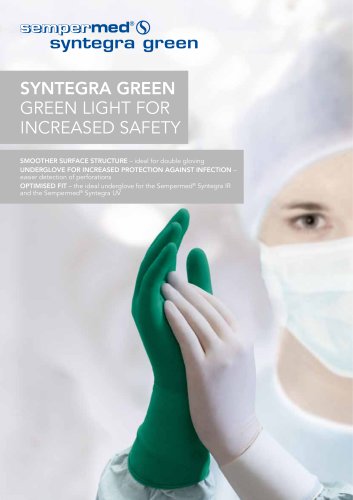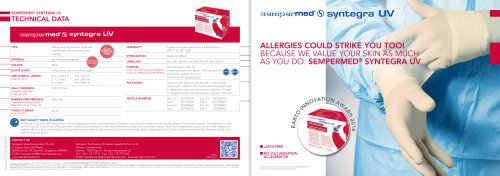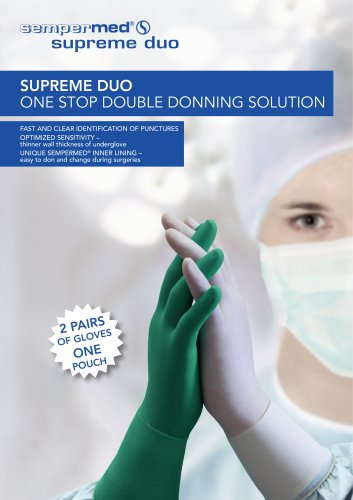 Website:
Sempermed Industrial
Website:
Sempermed Industrial
Catalog excerpts

inform Protection Against Viral Penetration – Sempermed Follows a Stricter Standard The new norm EN ISO 374-5:2016 defines requirements and test methods for protective gloves with the aim of protecting glove users against harmful microorganisms. This new norm relates to the standard test method ISO 16604:2004, and is very similar to the older ASTM F1671:2004. Both evaluate whether viruses, fungi and bacteria are able to penetrate protective gloves. At Sempermed, we will continue to follow the stricter ASTM F1671:2007. Read on to find out why we decided to do so and still meet the requirements of EN ISO 374-5:2016. Recognised test methods Sempermed’s stricter standard There are two globally recognised standard test methods which can be employed to test the resistance of materials used in protective clothing to penetration by blood-borne pathogens: ISO 16604:2004 and ASTM F1671:2007. These methods, which employ Phi-X174-Bakteriophage penetration, are suitable for determining whether protective gloves can resist viral penetration. For years, we have been testing and certifying our gloves using the United States’ ASTM standard for microorganisms. Approved by the Federal Drug Administration for the testing of medical gloves, this tried and tested standard has been used for decades. With EN 374-1 becoming applicable on an international level, a new norm, EN ISO 374-5:2016, was introduced simultaneously. This norm describes the performance requirements gloves must meet in protecting against bacteria, fungi and viruses. Since viruses are very small microorganisms, it is necessary to specifically test if gloves protect against viruses. EN ISO 374-5:2016 requires that testing follows the previously mentioned test method based on ISO 16604:2004. We have achieved that this stricter standard is now accepted by our notified bodies for the EC type examination following the new PSA directive (EU) 2016/425. This means that Sempermed can continue to conduct viral penetration tests based on the stricter ASTM F167
Open the catalog to page 1
Comparing the test procedures The steps involved in the test procedures based on both ASTM F1671:2007 and ISO 16604:2004 are very similar. First, a material sample is taken and placed securely in a test cell. A solution containing the virus is then applied to the glove’s exterior surface. The virus chosen for these tests is the Phi-X174-Bakteriophage, which is approximately 30 nanometers in size. By comparison, at a size of around 120 nanometers, HIV type 1: 120 nanometres in size the dangerous HIV type 1 is four times larger than the small Phi-X174-Bakteriophage. After the sample has been...
Open the catalog to page 2All Sempermed Industrial catalogs and technical brochures
-
Sempermed® SUPREME
3 Pages
-
Sempermed® syntegra green
2 Pages
-
SEMPERMED® SYNTEGRA UV
2 Pages
-
Sempermed® VELVET
2 Pages
-
Sempermed® supreme duo
4 Pages








